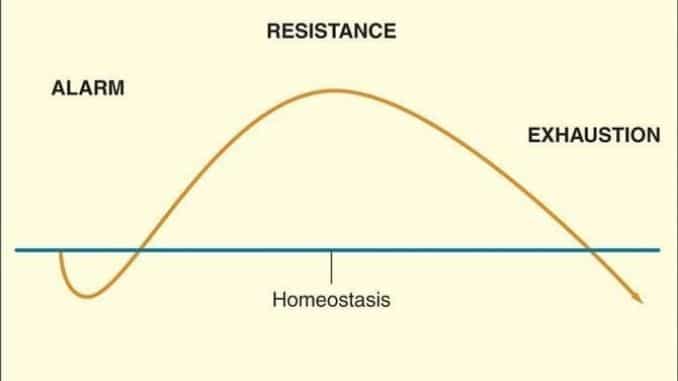
Human beings are creatures of habit, but we also like variety. When it comes to the benefits of switching exercise routines, many experts recommend periodic changes to your routine. However, is there any evidence behind this practice? This article breaks down the different arguments that all have some validity. Let’s discover the best workout strategies for maximum results and performance.
The Controversy
General Adaptation Syndrome: Believe it or not, there is a lot of controversy surrounding workout variation. Those who support variation describe a phenomenon called general adaptation syndrome. This means your body gets accustomed to repetitive workouts, which limits continued growth. They call this a “plateau,” and it may be difficult for you to break out of this.
On the other side, some gurus claim that as you do the same exercise repeatedly, your form and performance improve. They say that too much change may set you back and reduce efficiency, thus limiting improvements.
Which one of these two points of view is correct? Well, maybe both of them.
Adaptation Is Real
Imagine that you exercise in the same manner three times a week. It could be running a few miles at the same speed, or maybe doing bench presses with the same number of sets and repetitions and with the same weight all the time. If you followed this kind of routine, your body would adapt quickly and further gains would be minimal. Not only that, you would probably get so bored that it would tempt you to quit.
For beginners, reaching a plateau might take some time as the body is not used to regular exercise.
Practice Makes Perfect
On the other hand, doing the same thing repetitively eventually makes you an expert. If you focus on improving your form and technique, then more muscles get activated, and your benefits of switching exercise routines improve. On the other hand, if you spend all your time learning new exercises, you may never achieve peak proficiency in any of them.
Change But No Change
As you may have already guessed by now, you can make workout changes while doing the same exercise. The most obvious factors you can adapt are:
- Weight: Adding more pounds stimulates muscle growth
- Repetitions: As you get more fit, increase the number of repetitions
- Intensity: If you jog a mile, you could gradually advance to running or sprints
- Frequency: If you work out three times per week, consider increasing to four to six times per week
- Duration: If you’re taking 15-minute runs now, then work up to 30 to 45 minutes
None of these changes modify the type of exercise, but rather certain characteristics within an activity. This kind of variety also helps shine a light on one of the leading theories behind how our bodies achieve gains in physical performance.
Selye’s General Adaptation Syndrome
In the late 1930s, Hungarian endocrinologist, Hans Selye developed the general adaptation syndrome (GAS) theory. GAS provides an overall explanation about how organisms respond to stress. Many experts have adapted Selye’s theory and applied it to the human response to exercise. The four stages of GAS can be described as:
- Stage 1 – Homeostasis: A period of stability where there is no change ― no growth and no deterioration
- Stage 2 – Alarm: This happens when you’re faced with stress or danger; your body gears up to react; for the athlete, this is a response to exercise; as this stage progresses, the body’s performance makes gains
- Stage 3 – Resistance: As your body reacts to stress (exercise), it can reach a point where it can’t adapt any longer; this only occurs after a certain period of time where the body improves its ability to deal with stress; the resistance point can be modified by proper nutrition, rest and exercise modifications
- Stage 4 – Exhaustion: When an organism can no longer adapt, it begins to fail.; this happens due to overtraining, injuries, poor nutrition and lack of rest
General adaptation syndrome (image source: Psychlopaedia)
GAS and Athletic Performance
GAS has been adopted by sports trainers to describe how the body reacts to exercise. The “alarm” is a workout or a run. As the body reacts, the curve goes upward. This means gains in strength, speed, or stamina. Ideally, these gains should continue to grow over time and not fall due to the benefits of switching exercise routine, resistance, and exhaustion.
Outline Goals
Now that we understand the theory, how do we put it into practice? The first step is to outline a workout plan. This should be divided into days, weeks, months and even years. For example, you might decide to do upper body work one day, lower body the next, and cardio on day three. A three-day-a-week schedule, this works fine. For six days a week, you could repeat the cycle.
Now you could also set weekly goals. Some of these might be to improve your form as the week progresses. As you get stronger, your body control should improve as you manage the weight easier.
Next, you could set biweekly or monthly goals shooting for an increase in the number of repetitions you do for each exercise, or you might want to increase weight. You could also toggle between the two, that is, once you reach your repetition goal, you could then increase weight then repeat the process.
When it comes to cardio workouts, you can set goals in relation to speed and overall time.
Specific Adaptations
Here are some ideas you can use to change up your workout routine:
- Sets and reps: If you normally do three sets of 10 to 15 reps, try adding weight and do eight sets of 3 to 5 reps; you can also staircase your sets by adding a rep to each subsequent set (set one = 1 rep, set two = 2 reps, set three = reps, and so on up to 10 or 12)
- Intensity: For weightlifting, this could mean less rest time between sets. Remember, don’t ever sacrifice form for doing an exercise fast; the best way to avoid injury is good form and control; for the runner, you could try sprints instead of steady speed running
- Frequency: Try adding workout days; if you’re already maxed out, you might change how often you train a particular body part
- Duration: Work out longer to increase gains; this should be accompanied by a proper adjustment in diet and rest
Less Is More
In some cases, if you hit a stiff resistance point, you might have to scale back on your workout frequency, intensity and/or duration. Even professional athletes make the mistake of overtraining.
The trap occurs when you reach a high level of performance and want to squeeze out more gains, so you train harder. However, what your body needs is a chance to recuperate. If you find yourself hitting a wall, consider scaling back 25 to 50 percent for one to two weeks, then gradually increasing again. In more extreme cases of overtraining, more than 50 percent or even 100 percent rest periods may be indicated.
Mind Games
The other part of the resistance is the mental aspect. When you get bored, you put less effort and enthusiasm into your training. If you find yourself just “going through the motions,” it might be a good time to learn a new exercise. Still, don’t go hog wild and pile a bunch of new moves into your routine. Add one or two at a time and get a feel for them. Strive to become an expert.
Experience the Benefits of Switching Your Exercise Routine
In martial arts, the most basic moves are repeated thousands of times, even by the masters. This disciplined repetition gets the most out of every move in both body and mind. As you continue toward perfection, the body responds with improved performance.
Think of it as a building process. While you shouldn’t sacrifice the basics for exotic exercises of limited value, it still helps to stimulate the process with new experiences. Add new workout techniques, little by little, just like adding spices to a great meal. Other ways to change things up could be to reverse the order of your workouts, but always keep warm-up routines at the beginning.
Cross Training
Don’t be afraid to mix it up every once in a while with a completely new activity. For instance, distance runners might want to add in cycling or swimming. These exercises serve to strengthen supporting muscles, which decreases the major muscle workload. This transmits into improved stamina and speed. You might even join a soccer or tennis club, which could help improve your agility and sprint capability.
Food and Rest
As we’ve already touched upon, a central factor in making continuous gains is not simply by working out more. If you find yourself at a sticking point, you might need to tweak your diet, such as increasing protein and maybe even antioxidant intake. Plus, if you’re burning the midnight oil and training like an Olympian, you’ll eventually reach exhaustion.
Conclusion
Variety in exercise is critical. It should be done in an intelligent, goal-oriented manner. Keeping a training journal and/or enlisting the help of a personal trainer can help tremendously. Don’t be afraid of change, but don’t force it either. Listen to your body. If it’s making gains, run with it and prepare for change when you sense a plateau forming. Then, move up to set new personal records.
If you want to strengthen your core and back, flatten your belly, and achieve your dream abs while keeping yourself injury-free, then experience the benefits of switching your exercise routine with the Invincible Core program, here! check out the Invincible Core program, here!




